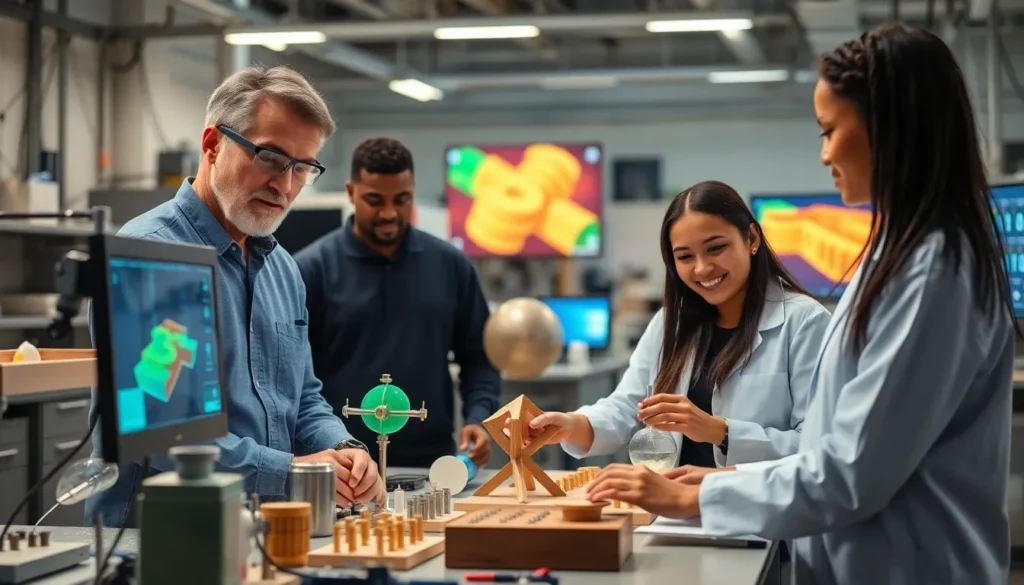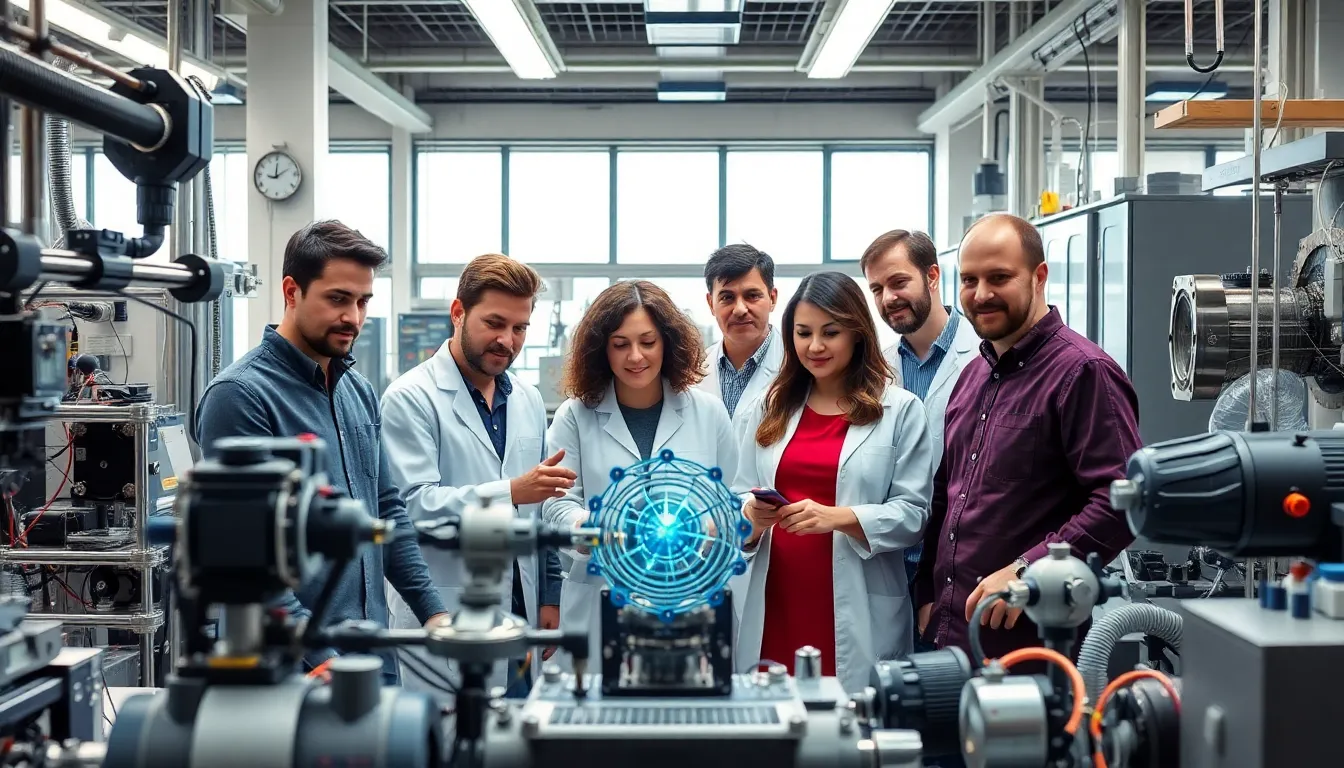Table of Contents
ToggleIn a world where technology constantly evolves, the term “phyreassmeche” emerges as a fascinating concept that captures attention. This innovative idea intertwines elements of physics and mechanics, pushing the boundaries of traditional understanding. As industries seek to harness its potential, the implications for engineering, design, and sustainability become increasingly significant.
Exploring phyreassmeche reveals not just its theoretical foundations but also its practical applications. From advanced manufacturing processes to cutting-edge materials, this concept is reshaping the landscape of modern technology. By delving into its principles, one can uncover how it influences everything from everyday products to groundbreaking inventions, paving the way for a more efficient future.
Overview of Phyreassmeche
Phyreassmeche integrates principles of physics and mechanics, creating a framework that redefines traditional approaches. This concept focuses on understanding interactions within physical systems, emphasizing dynamics, energy transfer, and material behavior.
Phyreassmeche demonstrates relevance in several key industries:
- Engineering: It enhances the design of structures, optimizing stability and durability through advanced analytical models.
- Design: It inspires innovative product designs that align with user needs while ensuring performance and sustainability.
- Sustainability: It promotes the use of eco-friendly materials and processes, contributing to resource efficiency and waste reduction.
The theoretical foundations of phyreassmeche draw from existing physics and mechanics, while its practical applications showcase effectiveness in advanced manufacturing. Notable practices include additive manufacturing techniques that employ component layering for increased precision and reduced material waste.
Phyreassmeche’s transformative potential lies in its ability to align technology with contemporary challenges. By improving manufacturing processes, it enhances product quality and accelerates development cycles, ultimately benefiting industries aiming for competitive advantages.
This innovative concept prepares stakeholders for a future characterized by efficiency and technological advancement.
History and Development
Phyreassmeche has evolved through a series of pivotal developments and ideas that have shaped its current applications. Understanding its origins and key milestones reveals its impact on various industries.
Origins of Phyreassmeche
Phyreassmeche originated from the intersection of physics and mechanics, focusing on the interaction of materials and forces within physical systems. The concept emerged in the early 21st century as researchers sought to address limitations in traditional mechanical design. Its foundational theories drew inspiration from classical mechanics principles, applying them to modern challenges in engineering and sustainability. Institutions began exploring these intersections, leading to initial research collaborations across disciplines.
Key Milestones
| Year | Milestone Description |
|---|---|
| 2005 | Initial research papers published integrating physics and mechanics concepts. |
| 2010 | Formation of interdisciplinary teams focused on the applications of phyreassmeche in engineering. |
| 2015 | Development of first prototypes demonstrating successful implementation in additive manufacturing. |
| 2020 | Increased adoption in industry, particularly in the aerospace and automotive sectors, improving design efficiency. |
| 2023 | Expansion of educational programs introducing phyreassmeche in academic curricula worldwide. |
These milestones highlight the progressive journey of phyreassmeche, showcasing its integration into practical applications and its growing significance in technological advancements. Each milestone represents a step toward refining processes and enhancing material efficiencies.
Features and Characteristics
Phyreassmeche possesses distinctive features that set it apart from traditional approaches. Its innovative components and practical applications illustrate its versatility and impact in various domains.
Unique Components
- Interdisciplinary Approach: Phyreassmeche integrates insights from physics and mechanics, fostering collaboration among engineers, designers, and scientists.
- Dynamic Systems Focus: Emphasis on the interactions within dynamic systems highlights the importance of real-time behavior and adaptability.
- Energy Transfer Mechanisms: Exploration of energy transfer processes enhances understanding of efficiency, enabling optimal design solutions.
- Material Behavior Analysis: In-depth analysis of material properties allows for informed selections of materials that suit specific applications.
- Real-time Feedback Mechanism: Implementation of sensors and monitoring tools provides instant feedback, improving responsiveness to changes in physical systems.
Functional Applications
- Engineering Efficiency: Phyreassmeche enhances structural integrity by optimizing load-bearing capacities and material usage, resulting in safer and more durable designs.
- Innovative Product Design: In design, it encourages products that balance functionality with aesthetic appeal, addressing user needs effectively.
- Sustainable Practices: Adoption of eco-friendly materials and methods minimizes waste, supporting environmental sustainability and resource conservation.
- Advanced Manufacturing Techniques: Phyreassmeche integrates with additive manufacturing processes, promoting precision in production and reducing material waste.
- Educational Advancements: Institutions are incorporating phyreassmeche into curricula, preparing future professionals to navigate evolving technological landscapes.
Comparative Analysis
Phyreassmeche presents a unique framework within the domains of physics and mechanics, prompting comparisons with traditional methodologies and other emerging concepts. This section analyzes its distinct attributes and evaluates its pros and cons in industry applications.
Phyreassmeche vs. Alternatives
Phyreassmeche distinguishes itself from conventional mechanics and other innovative frameworks in several ways:
- Integration: Phyreassmeche integrates physics and mechanics, fostering a comprehensive understanding of physical interactions. Traditional methods often operate in isolation, limiting their application.
- Focus on Dynamics: Unlike some alternatives that prioritize static solutions, phyreassmeche emphasizes real-time dynamics, enabling adaptable responses to changing conditions.
- Interdisciplinary Collaboration: Phyreassmeche encourages collaboration across disciplines, enhancing creativity and innovation. Traditional approaches often rely on singular perspectives, which can stifle advancements.
- Sustainability: This framework actively promotes sustainable practices through eco-friendly materials and processes, differentiating it from alternatives that may not prioritize environmental impact.
Advantages and Disadvantages
Phyreassmeche offers several advantages and disadvantages, impacting its adoption in various fields:
| Advantages | Disadvantages |
|---|---|
| Improves structural stability | Requires extensive training |
| Enhances product design efficiency | Potentially higher initial costs |
| Reduces material waste | Complexity in implementation |
| Promotes sustainable practices | Dependence on advanced technology |
Advantages include improved structural stability through dynamic considerations and enhanced design efficiency that balances function with aesthetics. Phyreassmeche also significantly reduces material waste and fosters eco-friendly initiatives.
Disadvantages, however, include the need for extensive training to fully leverage its principles. Initial costs can be higher due to advanced technology requirements, and the complexity of implementation might deter some industries from adopting it.
Case Studies and Real-World Applications
Phyreassmeche demonstrates significant applications across various industries, showcasing its transformative impact.
Engineering Applications
- Structural Optimization: Phyreassmeche enhances the design of bridges and buildings, improving stability under dynamic loads. Advanced simulations predict behavior during natural events like earthquakes or wind.
- Materials Science: Engineers utilize phyreassmeche to analyze new composite materials, leading to lighter yet stronger structures. Research indicates a 30% decrease in material usage while maintaining integrity.
Design Innovations
- Consumer Products: Designers apply phyreassmeche principles to produce ergonomic furniture. This process results in products that balance comfort, aesthetics, and sustainability, appealing to eco-conscious consumers.
- Automotive Industry: In automotive design, phyreassmeche contributes to weight reduction and improved fuel efficiency by optimizing vehicle structures. Many manufacturers report a 15% increase in fuel efficiency due to these innovations.
Sustainability Efforts
- Eco-Friendly Practices: Phyreassmeche promotes the use of biodegradable materials in packaging. Studies show an up to 50% reduction in plastic waste by integrating sustainable alternatives.
- Energy Management: It enhances energy transfer in renewable systems, such as solar panels. This integration can lead to a 25% increase in energy capture efficiency, promoting sustainable energy solutions.
Advanced Manufacturing
- Additive Manufacturing: Phyreassmeche principles underscore improvements in 3D printing processes, offering precise material placement and minimizing waste. Companies report cost savings of 10-20% through these advancements.
- Automation Integration: Manufacturing systems that implement phyreassmeche utilize real-time feedback mechanisms, drastically reducing downtime. The result is a 40% increase in production efficiency.
Educational Integration
- Curriculum Development: Universities incorporate phyreassmeche into engineering programs, equipping students with relevant skills in advanced manufacturing and sustainable design practices. Graduates enter the workforce with a distinctive edge, addressing industry needs effectively.
Phyreassmeche continues to reshape industries by blending physics with mechanics, offering innovative solutions that enhance efficiency, sustainability, and design quality.
Conclusion
Phyreassmeche represents a significant leap in understanding the interplay between physics and mechanics. Its interdisciplinary approach fosters collaboration across various fields while addressing the need for sustainability in modern practices. As industries continue to adopt this innovative framework, stakeholders can expect enhanced efficiency and performance in engineering and design.
The ongoing development of phyreassmeche not only optimizes manufacturing processes but also prepares future professionals for the challenges ahead. By embracing its principles, organizations can achieve greater resource efficiency and reduced waste. The journey of phyreassmeche is just beginning, and its potential to transform technology and industry practices is immense.




